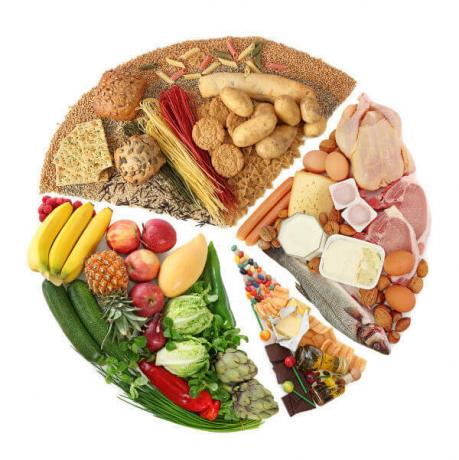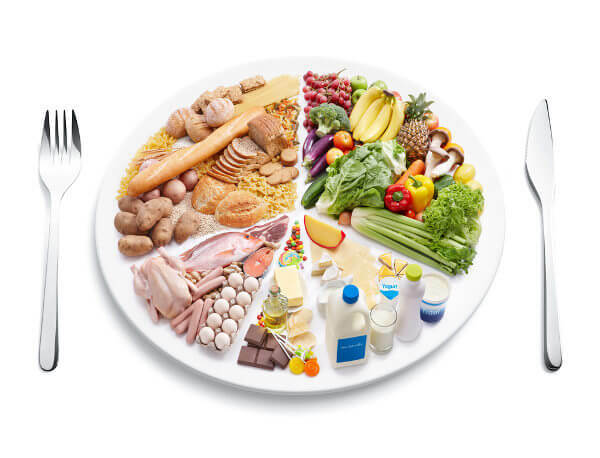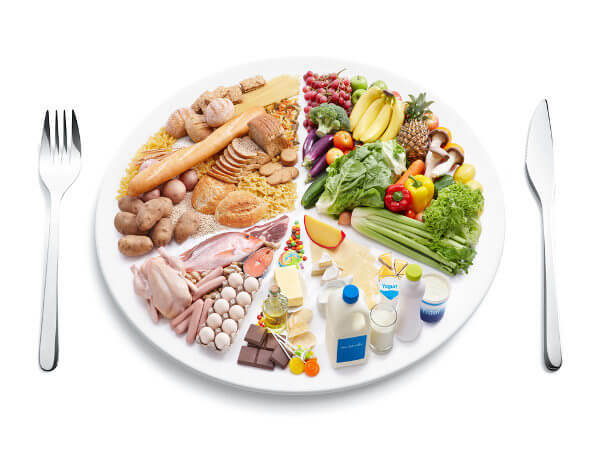THE pyramidto feed is a graphical representation that gathers important information about the groupsinfoods present in our diet. Its main objective is to ensure the nutritional well-being population, informing them, mainly, about the recommended portions of each type of food.
→ brazilian food pyramid
There are several types of food pyramids around the world. They usually presentvariations, because each region has a specificityatdiet. In Brazil, for example, the first pyramid was developed in 1999, however, after this period, it was restructured to better adapt to the reality of our country.
In this text, we will consider the pyramid proposed by Philippi, in 2013, in his work “Redesigning the Brazilian food pyramid for healthy eating”. It is based on a dietin2000kilocalories and groups foods into eight basic groups. These eight groups are arranged in four distinct levels, namely:
First level (base of the pyramid): group of cereals, tubers, roots;
Second level: vegetables group and fruit group;
Third level: milk and dairy products group, meat and eggs group, pulses and oilseeds group;
Fourth level (top of pyramid): group of oils and fats, group of sugars and sweets.

The food pyramid above was created based on the model proposed by Philippi in 2013.
→ Food groups present in the food pyramid
In the Brazilian food pyramid, foods are divided into eightgroups arranged on four levels. As each food presents a great varietyin nutrients, they were classified according to the nutrient that has the greatest amount in its composition.
In each of the groups present in the pyramid, it is possible to observe the ideal amount that should be ingested. Note below the food groups and the recommended daily total of kilocalories:
Rice, bread, pasta, potatoes, cassava: 900 kcal (6 servings per day)
Vegetables and vegetables: 45 kcal (3 servings per day)
Fruits: 210 kcal (3 servings per day)
Meat and eggs: 190 kcal (1 serving per day)
Milk, cheese and yogurt: 360 kcal (3 servings per day)
Beans and Oilseeds: 55 kcal (1 serving per day)
Oil and fat: 73 kcal (1 serving per day)
Sugar and candies: 110 kcal (1 serving per day)
Do not stop now... There's more after the advertising ;)
With these data, it is possible to see that the group of carbohydrates (rice, bread, pasta, potatoes, cassava) should be the basis of our diet, since they are foods that provide energy. In this case, it is important to highlight that the best option is to invest in whole products, as they provide more fibers.
Read too: fast food risks
At the second level of the pyramid, we find two groups, the vegetables group and the fruits group. These foods are rich in vitamins, minerals and fiber and are called regulators.

Foods rich in carbohydrates are recommended in greater quantities as they are responsible for providing energy.
AboveFromvegetables,vegetablesand fruits, we see a level with different foods (milk and dairy group; group of meats and eggs and group of legumes and oilseeds), which are related to the supply of proteins.
Proteins are essential for the functioning of our body, being related to a series of functions, one of them being the repairinfabrics of our body. Furthermore, at this level we find milk and dairy products, which are responsible for providing a large amount of calcium.
On the last level, we have the groups of oils, fats, sweets and sugars. These groups must have moderate consumption, as their excessive consumption is related to cases of obesity. In this group, the keyword is moderation.
→ Physical activity and six meals a day
The Brazilian food pyramid recommended by Philippi in 2013 features as a differential the presence of two important messages: the need to have 6 meals a day and to practice physical activities. According to the recommendations present in the food pyramid, it is necessary to have the three basic daily meals and snacks in between. It is also important to practice activities for at least 30 minutes a day.

In addition to providing guidance on the need for each type of food, the Brazilian pyramid talks about the need to carry out activities and eat 6 meals a day.
These recommendations accompany the food pyramid, as the balanced diet, without health care, it has little effect on the health of the population. Therefore, the Brazilian food pyramid provides information that guarantees the health of its population.
Read too: Does food interfere with studies?
→ Importance of the food pyramid
The food pyramid is an important tool that helps the population to guide the feeding, making us understand what a healthy eating. Its main function is to guide, not being responsible for providing a diet to be followed.
In the food pyramid, foods are arranged by level of need. Carbohydrates, for example, are at the base because they are needed for energy supply. When we understand the needs of each food group, we better understand why healthy eating needs variety, moderation and balance.
Read too: Recommendations for healthy eating
→ The 10 steps to proper and healthy eating
Healthy eating goes beyond simply knowing how to choose foods well. Therefore, the Ministry of Health, in the “Food guide for the Brazilian population”, proposes 10 steps to be followed to achieve adequate nutrition. See below what they are:
make of food in nature or minimally processed on the basis of food.
Use oils, fats, salt and sugar in small amounts when seasoning, cooking food and creating culinary preparations.
Limit your consumption of processed foods.
Avoid consuming ultra-processed foods.
Eat regularly and carefully in appropriate environments and, whenever possible, with company.
Shopping at places that offer a variety of foods in nature or minimally processed.
Develop, exercise and share cooking skills.
Plan the use of time to give food the space it deserves.
Give preference, when away from home, to places that serve freshly made meals.
Be critical of information, guidance and messages about food in commercial advertisements.
By Ma. Vanessa dos Santos

